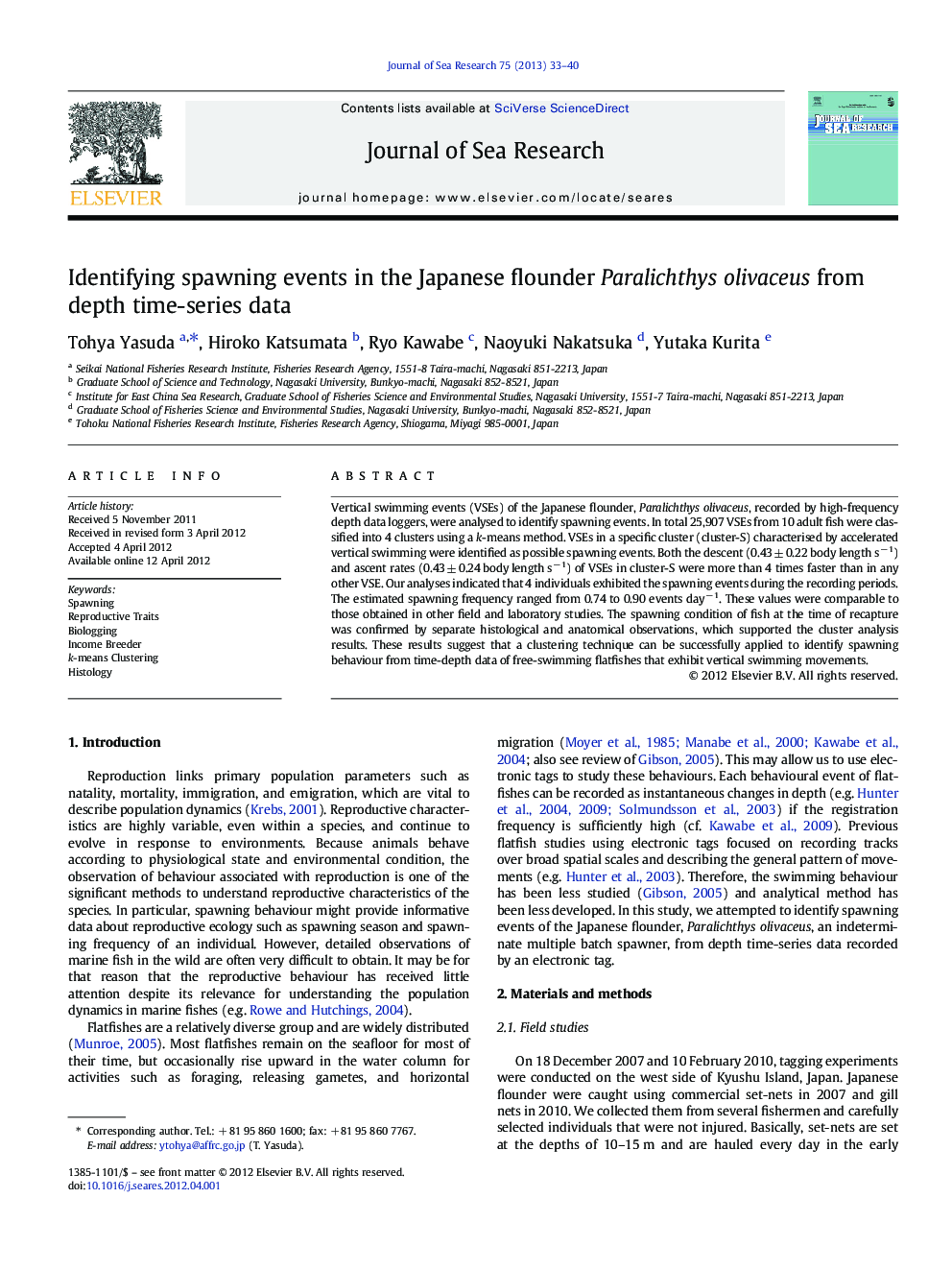| Article ID | Journal | Published Year | Pages | File Type |
|---|---|---|---|---|
| 6387523 | Journal of Sea Research | 2013 | 8 Pages |
Vertical swimming events (VSEs) of the Japanese flounder, Paralichthys olivaceus, recorded by high-frequency depth data loggers, were analysed to identify spawning events. In total 25,907 VSEs from 10 adult fish were classified into 4 clusters using a k-means method. VSEs in a specific cluster (cluster-S) characterised by accelerated vertical swimming were identified as possible spawning events. Both the descent (0.43 ± 0.22 body length sâ 1) and ascent rates (0.43 ± 0.24 body length sâ 1) of VSEs in cluster-S were more than 4 times faster than in any other VSE. Our analyses indicated that 4 individuals exhibited the spawning events during the recording periods. The estimated spawning frequency ranged from 0.74 to 0.90 events dayâ 1. These values were comparable to those obtained in other field and laboratory studies. The spawning condition of fish at the time of recapture was confirmed by separate histological and anatomical observations, which supported the cluster analysis results. These results suggest that a clustering technique can be successfully applied to identify spawning behaviour from time-depth data of free-swimming flatfishes that exhibit vertical swimming movements.
Graphical abstractDownload full-size imageResearch Highlights⺠Vertical swimming events (VSEs) of the Japanese flounder recorded by high-frequency depth data loggers. ⺠These loggers were analysed using a k-means clustering method. ⺠VSEs in a cluster characterised by the maximal ascent and descent rates were considered as possible spawning events. ⺠The separate histological and anatomical observations supported the cluster analysis results.
